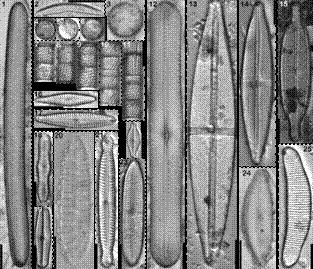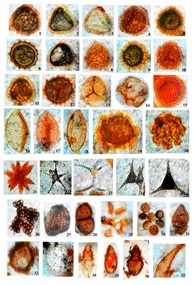Sediments decode climate and environmental changes on Kaas Plateau around 8664 years BP
A new study of the sediments from a seasonal lake in the Kaas Plateau in the Satara district of Maharashtra has indicated a major shift in the Indian Summer Monsoons towards dry and stressed conditions with low rainfall during the Early-Mid–Holocene, around 8664 years BP. Sediment profile dating back to 8000 years which helped decode climatic signatures indicated a relatively reduced rainfall and weak southwest monsoon during the late Holocene (around 2827 years BP).
Kaas Plateau, nestled in the Western Ghats is about 140 km from Pune, was included in the UNESCO World Natural Heritage Site in 2012. Known as Kaas Pathar in Marathi, its name is derived from the Kaasa tree, botanically known as Elaeocarpus glandulosus (rudraksha family).
Designated as a biodiversity hotspot, the Kaas Plateau comes to life with various seasonal flowers forming a floral carpet over the entire lateritic crust during August and September. Control measures have been implemented by the forest authorities to handle the pressure of nature lovers visiting the Kaas Plateau.
Agharkar Research Institute (ARI), Pune, an autonomous institute of the Department of Science and Technology along with the National Centre for Earth Sciences, Thiruvananthapuram studied the sediments of a seasonal lake to understand and decipher the past climate of the Kaas Plateau. Sediment profile dating back to 8000 years which was analysed (by available carbon dates-AMS) to decode the climatic signatures, indicated that the seasonal lake favoured freshwater accumulation almost for 8000 years before the present (BP) and probably dried sometimes after 2000 years BP.
The observations from the study revealed that the seasonal lake is probably a product of an erosional localized shallow depression on a pediment (rock debris) developed over the crust. As noted by UNESCO, the present “Flower Wonder” is located on a lake that dates back to the Early-Mid-Holocene period, which means it is an ancient lake that has been preserved over a long time. The signatures of diatoms, mites, thecamoebians, and sediment characteristics provided better resolutions regarding the hydrological processes and modification of the seasonal lake.
During the early to mid-Holocene, at around 8664 years ago, pollen, as well as diatom data, indicated a change in the climate from freshwater to drier conditions with low rainfall. Surprisingly, there was a significant rise in the number of diatoms in between. This suggests a major shift in the Indian summer Monsoon activity during that time, possibly resulting in intermittent humid periods amidst the dry spells.
The observations of the scientists showed a decrease in rainfall and a weakened southwest Monsoon during the late Holocene (around 2827 years BP). However, during the recent past (around last 1000 years), pollen, as well as the presence of a high number of planktonic and pollution-tolerant diatom taxa indicated lake eutrophication, possibly due to human impact and cattle/livestock farming in the catchment.
The study by Thacker, Mital; Limaye, Ruta B; D, Padmalal; Rajaguru, SN; Kumaran, KPN; Punekar, SA; B Karthick strongly suggests that southwest Monsoon intensified during the Early Holocene, approximately 8000 years ago, and the northeast monsoon relatively weakened around 2000 years ago. It is very likely that the ‘Flower Wonder’ might have existed for a longer duration, up to March-April, during the early–mid-Holocene (8000–5000 years), when the monsoon rainfall (more than 100 rainy days) was undoubtedly better than today.

Figure 1 Diatom assemblage recovered from the sediments of Kaas Lake

Figure 2 Palynological and Non-Pollen Palynomorph recovered from the sediments of Kaas Lake
The findings published in ‘Quaternary Science Advances’, emphasize the need for conservation measures to protect the site’s invaluable natural and cultural heritage.
The scientists Dr. Karthick Balasubramanian ([email protected], 020-25325053), Scientist, Biodiversity and Palaeobiology Group, and Dr. PK Dhakephalkar, Director, ARI, Pune, ([email protected], 020-25325002) can be contacted for further details.
Link to Publication: https://doi.org/10.1016/j.qsa.2023.100087

